GATHERINGS
Gatherings was an exhibition I made a few years ago by gathering some of my previous works through which I have gathered a certain group of people.
I think it is interesting to reflect back on this exhibition in these specific times; I wonder how a project could develop nowadays.
The exhibition consisted of two video works called «May 2012 (Mom, Jelena and me on the couch in the living room)» and «October-December 2016 (Stuttgart, Folklore classes)», one installation called «19 August 2016 (Brunch in the vinery)» and one photo called «15 November 2015 (In front of Jasenaš community hall).
May 2012 (Mom, Jelena and me on the couch in the living room)
This video was part of the multimedia installation called «1:1» through which I was exploring my own and family history; it interests me who they are and in which way they are connected.
It was a warm May afternoon. We sat on the couch in the living room, in our apartment, where three generations of our family have lived. We looked into each other’s eyes without an accurate time limitation, as long as we are able to stay concentrated on our relation and the space between us.
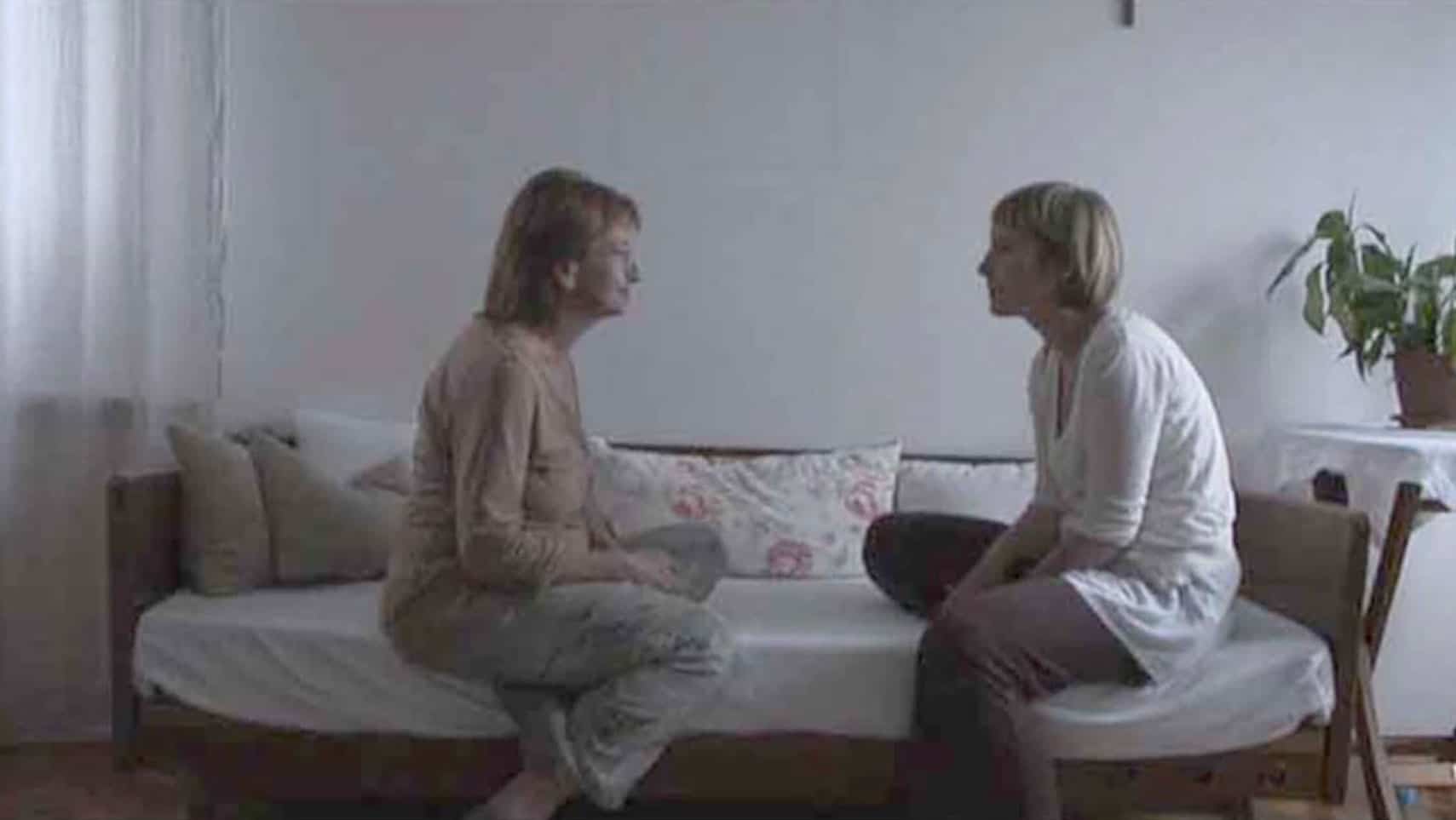
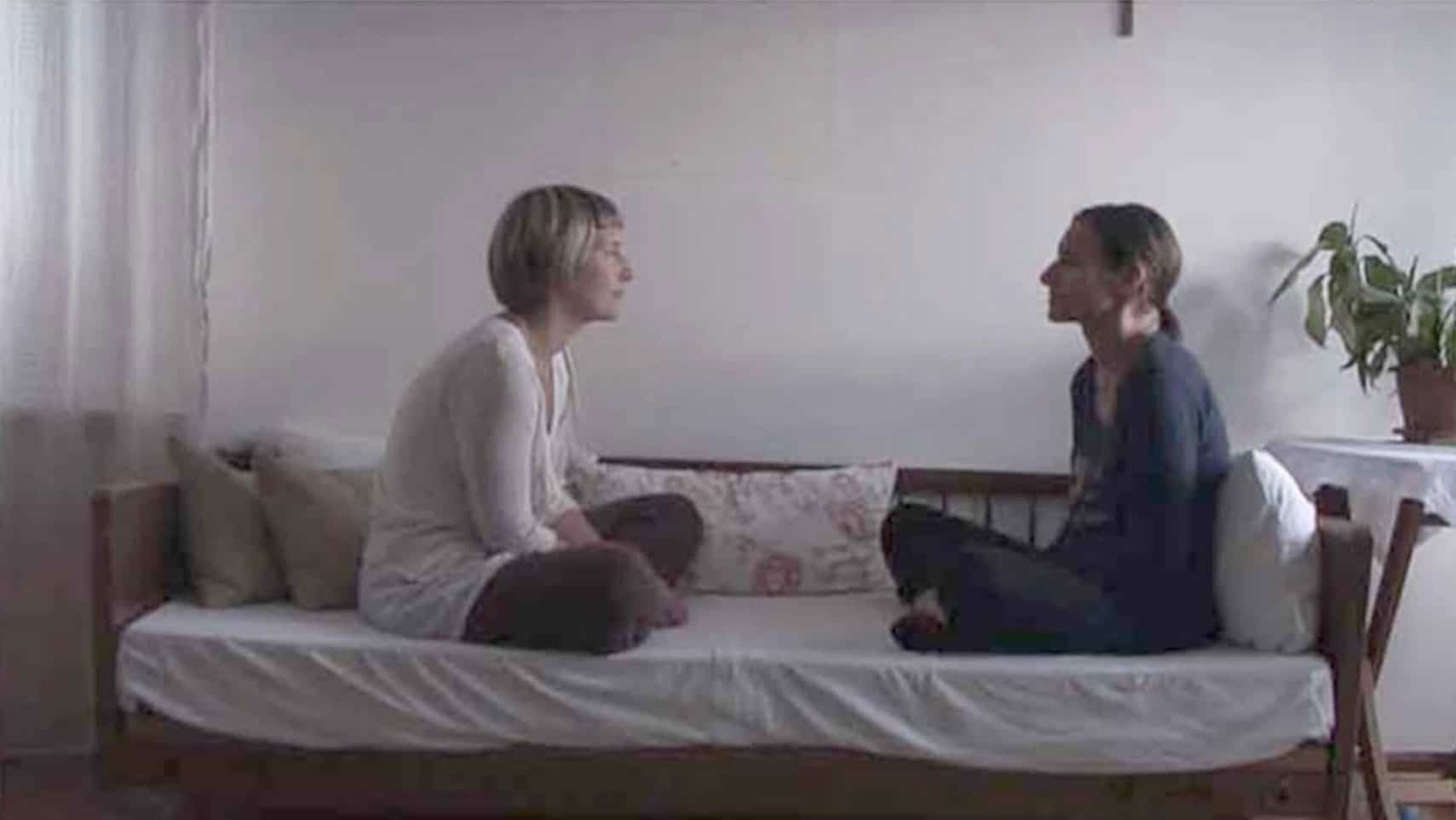
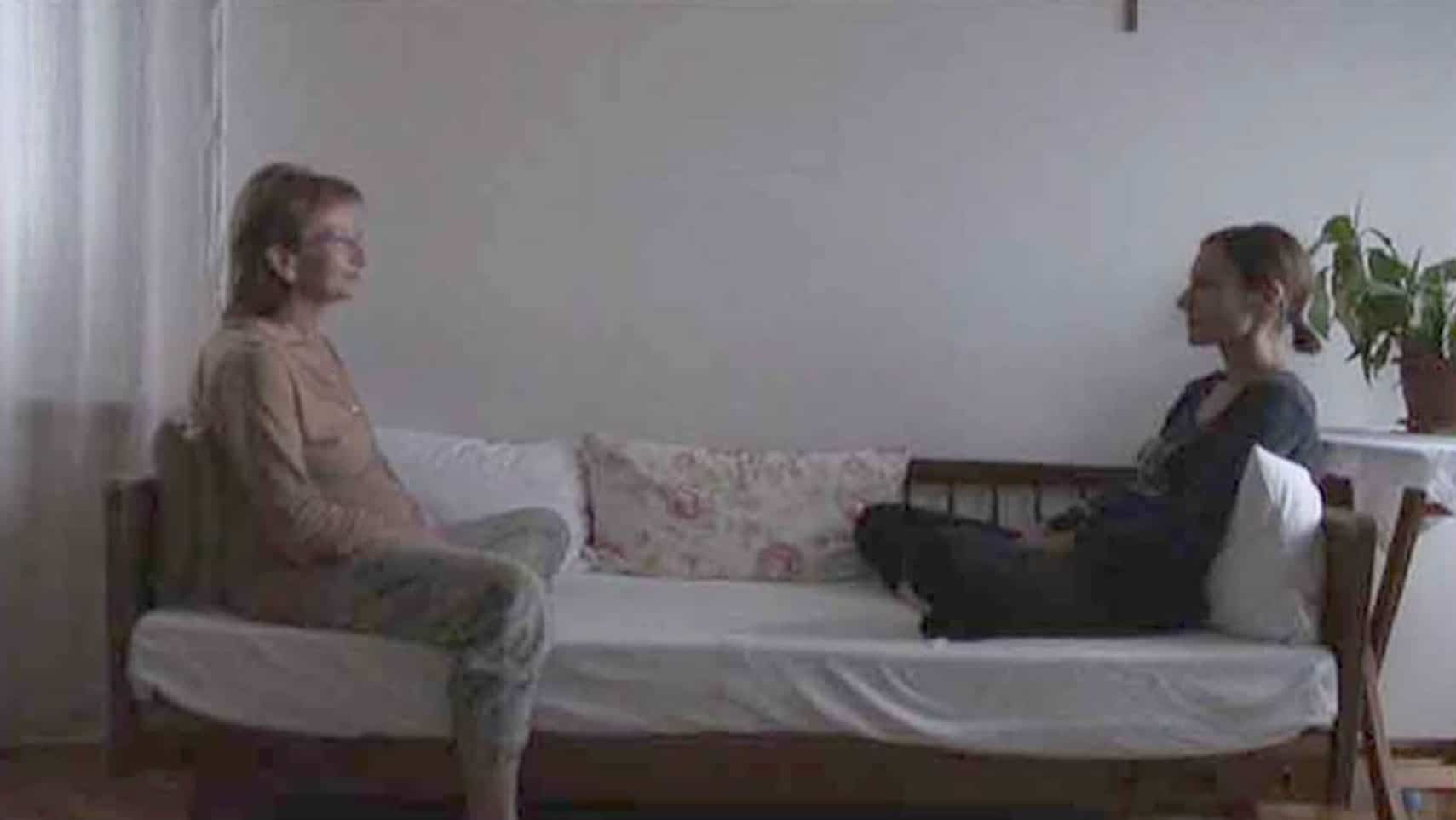
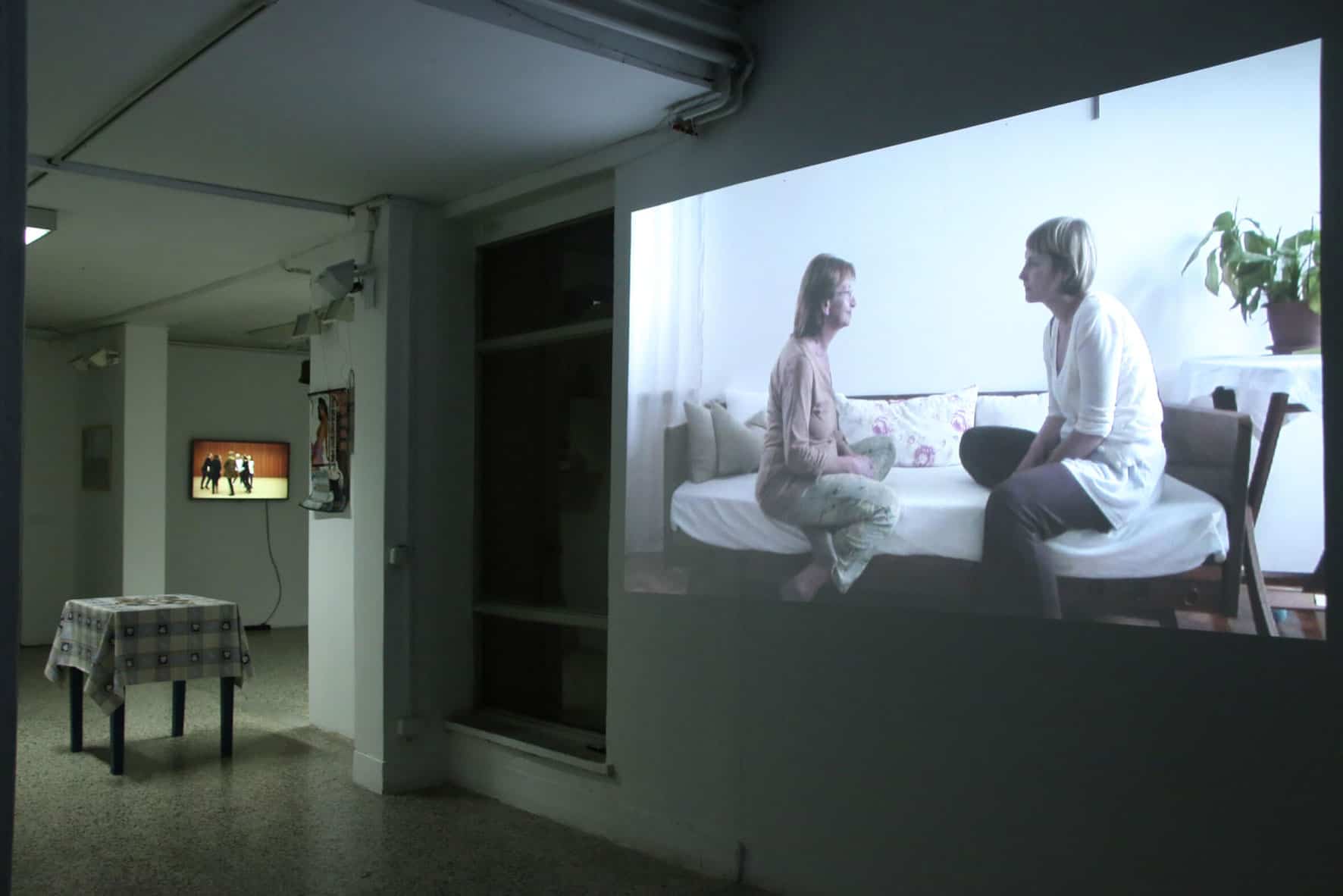
15 November 2015 (In front of Jasenaš community hall)
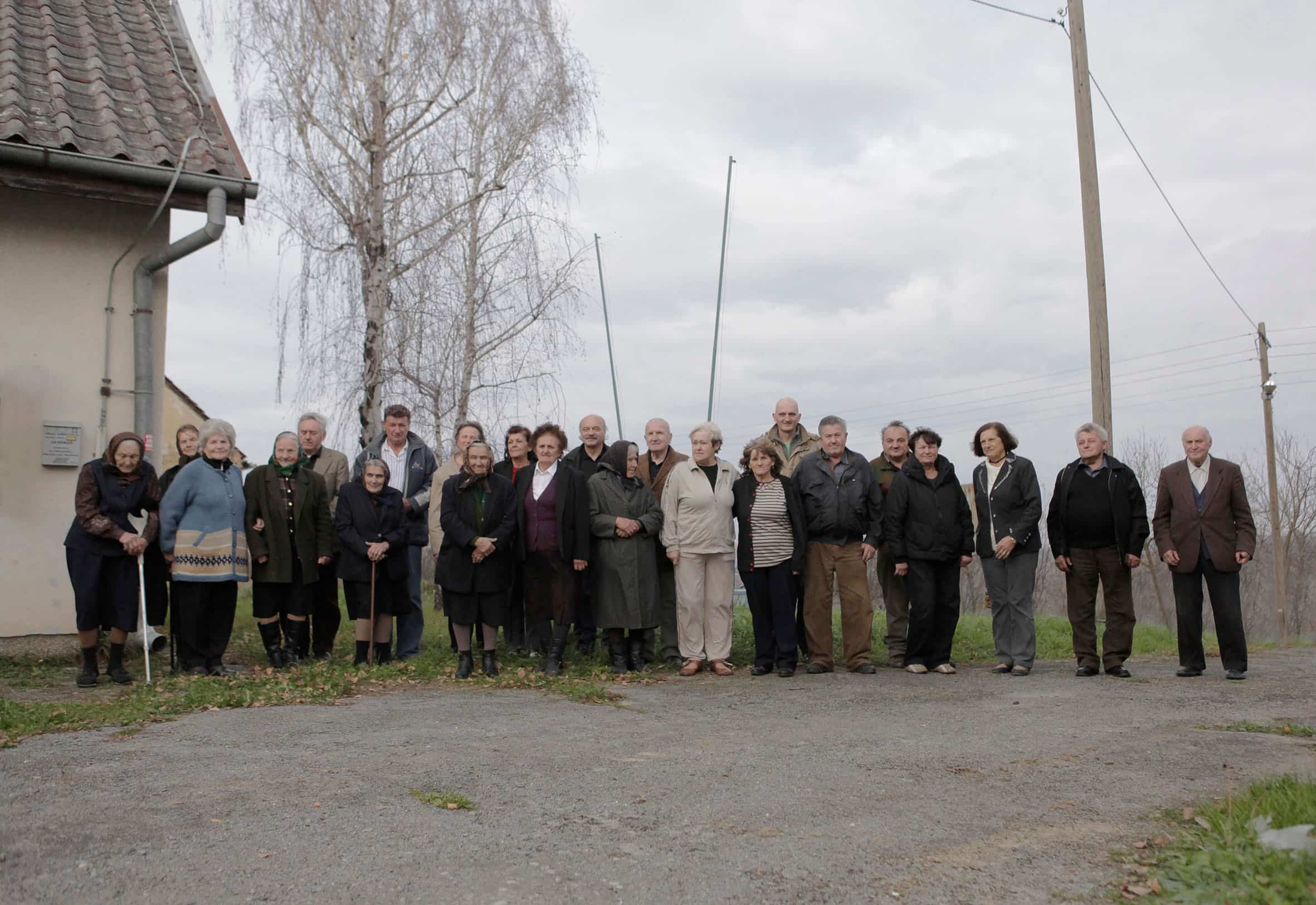
The cover photo for this article was taken as part of a multimedia installation called «Where is Jasenaš?» which collects stories of the displaced village and its abandoned houses, recalls former residents and gathers the current ones. Sometimes it seems documentary, sometimes fictional. Because sometimes it seems uncertain where Jasenaš is. Is it one particular village or any village? Is Jasenaš everywhere where its inhabitants are displaced and does it exist at all?
This village was, like Croatian villages in general, hit by a wave of emigration.
Unlike all the other Croatian villages this one was strongly affected by Second World War and later Croatian War of Independence in the 1990’s, because the village has a mixed population, Croatian and Serbian.
According to The Croatian Bureau of Statistics, in 1931 Jasenaš had 1094 residents. Since then the number of residents has been decreasing, and in the last population census in 2011, Jasenaš had only 77 residents, of which 7 residents younger than 19 years, and 50 residents older than 55 years.
Some of the displaced residents of Jasenaš were forced to leave and still have problems returning to their own houses, some have left self-willingly. Only a few of them have managed to come back.
Displaced residents of Jasenaš leave a large number of empty homes, some of which are in better condition, some in worse, some still have furniture and personal belongings in them and most of them don’t have either doors or walls so it is possible to enter them.
On 15 November 2015 I gathered the villagers of Jasenaš and made a group portrait in front of the community hall. I also gave a copy of this photograph to them to display it in their community hall.
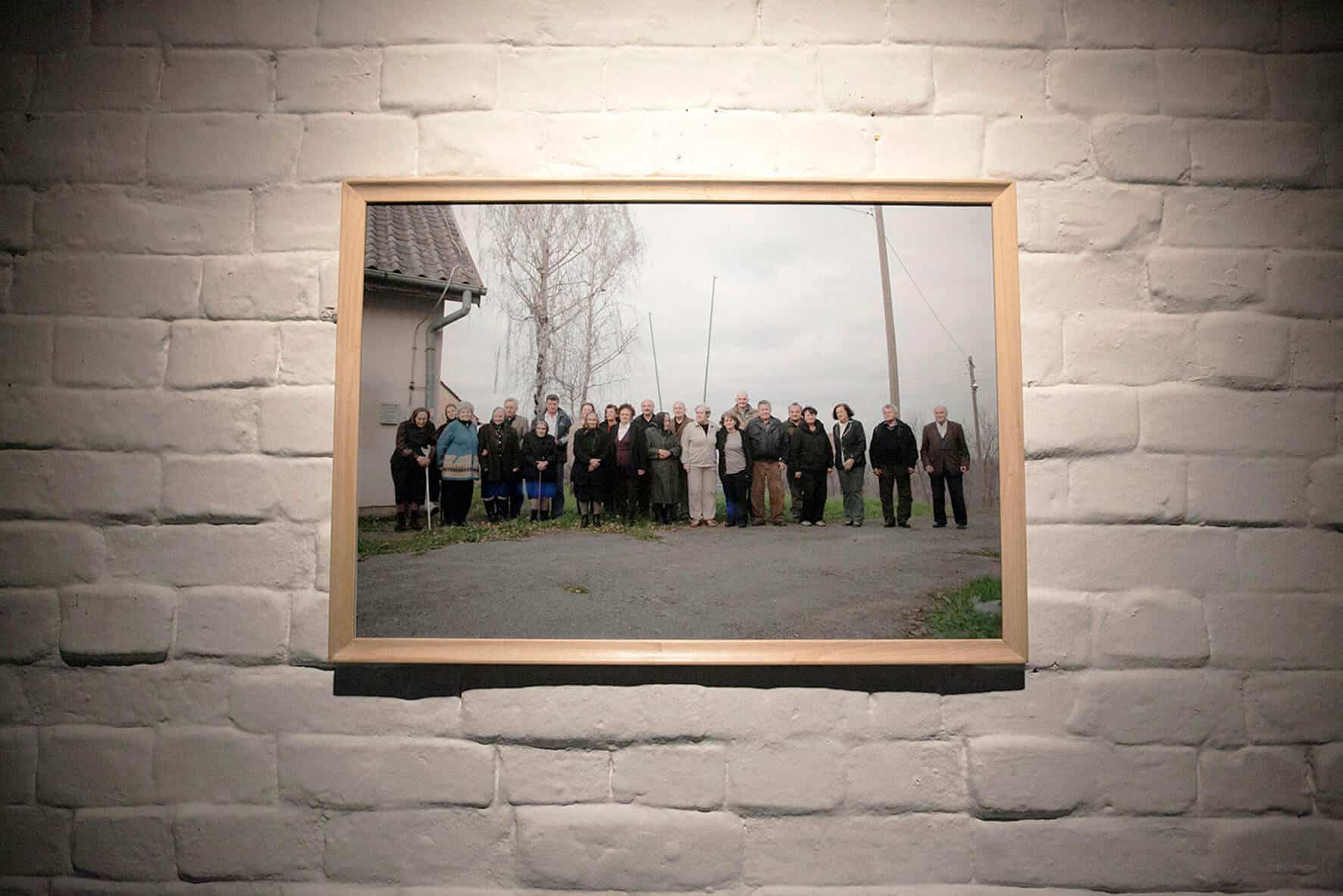
19 August 2016 (Brunch in the vinery)
This site-specific work is installed in the winery operation called Dalmacijavino in Jelsa, island Hvar, Croatia. The winery is one of many closed factories in Croatia since the 1990s.
I got an opportunity to make a site-specific installation in the space of the closed winery operation and have decided to revive the liveliest room of the winery, the kitchen, where the ex-workers used to gather and have brunch every day, as they told me, even after the winery got shut down.
I have decided to organize one more brunch («marenda» in Croatian) for the ex-workers of the winery, on August 19, 2016.
We documented it and we added the photos on the kitchen cabinet next to the other photos of their past brunches, gatherings or «team buildings» as the ex-workers call them. During their past «team buildings» they would usually make a lamb on a stick, a traditional Croatian meal prepared and eaten on especially important occasions, so they decided to do it one last time.
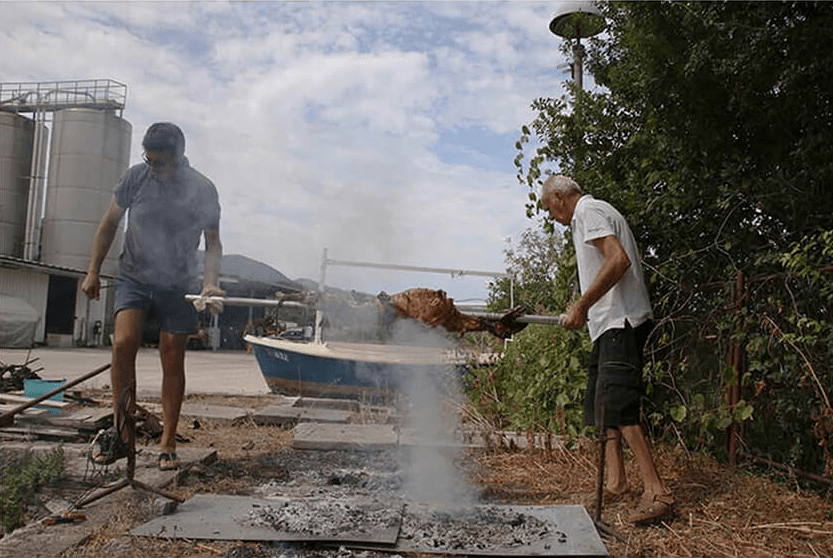
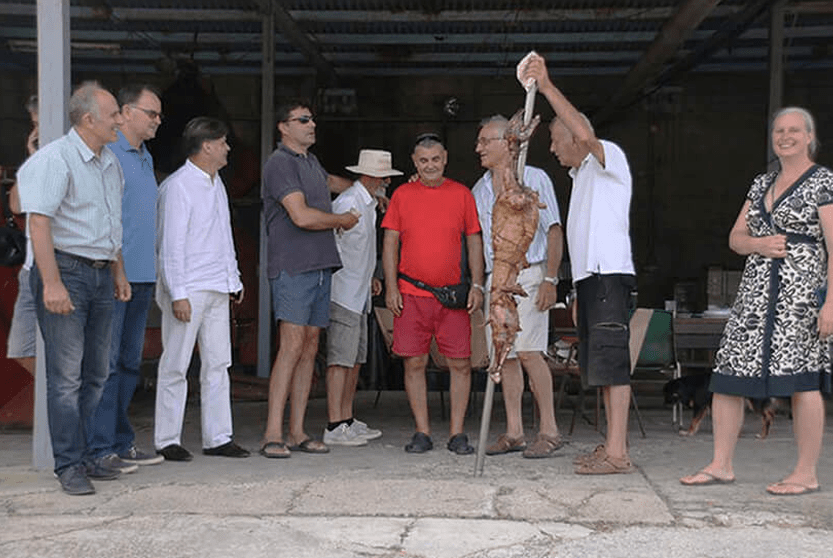
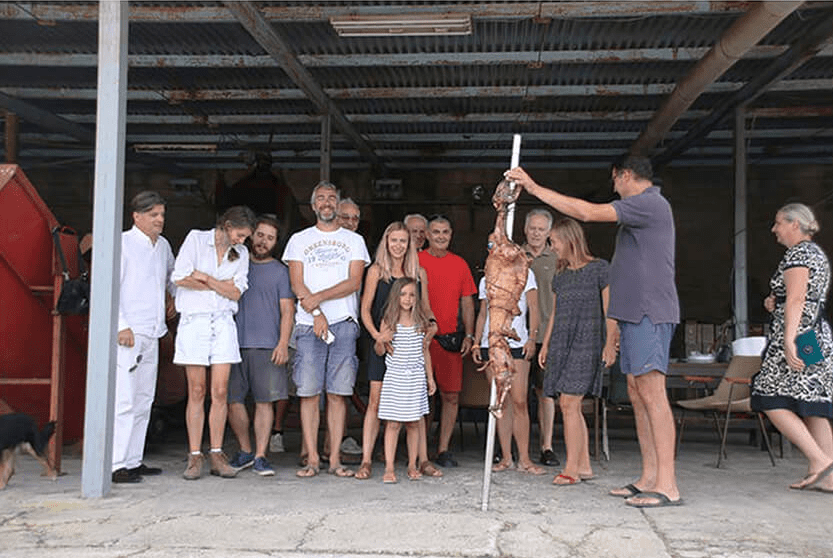
The winery is still there, closed and so are the photos on this block of the kitchen cabinet.
October-December 2016 (Stuttgart, Folklore classes)
While being on the artist residency in Akademie Schloss Solitude in Stuttgart and while working on my video «Where is home» I’ve met Ivanka, leader of the Croatian folklore in catholic mission Bad Cannstatt Stuttgart.
Ivanka is leading a group for children, for youth and for adults.
A numerous Croatian children and youth in Stuttgart go to Croatian folklore dance classes.
Since I’ve never danced Croatian folklore dance before, because in Croatia it is not so common to do so, I’ve asked Ivanka if I can try to dance. She said yes, so I was coming to dance in the adults beginners group on Tuesday evenings.
20 de febrero de 2017 (Redacción de un texto para «Gatherings»)¹ Thomas Crowley
<< What is gone can only be re-enacted, repeated, reconstructed, reshown, rethought and restored by an artificial act, by mimesis. In other words, what is past comes along with the present, via re-presentation, a present that contracts parts of the past in its actualisation, and can also include imaginations of the future. >>
Katharina Niemeyer²
We’ve all had the experience of repeating a word over and over again until it loses all meaning. But what happens when the repeated object is not a word, but an experience, a ritual, a film, a work of art? The result is not a loss of meaning, but rather meaning’s multiplication: echoes, reflections, unexpected resonances.
Ana Kovačić’s exhibition is a gathering of previous gatherings. It is, ultimately, a meditation on space and time. The exhibition itself is located in a particular place, for a fixed duration of time. But the works that make up the exhibition refer back to other spaces, and to the very specific times in which very specific gatherings took place. And some of these gatherings are themselves recreations of other times, other spaces: Croatian people in Stuttgart, Germany, re-enacting traditional dances in a new location, in an uncertain present; workers returning to their former workplace, re-creating a traditional brunch. The exhibition – and the gatherings represented within it – involve multiple acts of spatial, temporal and linguistic translation: of rural routines to the city, of outdoor cooking festivities to art studios and gallery spaces, of Croatian dances to southern Germany, even of this text itself (from English to Croatian).
The echoed and multiplied times, spaces and languages of these gatherings are mediated by memory, by nostalgia, by human bodies and human minds. In this way they are intensely personal. They are personal for Ana herself – they include interactions with her mother, her sister, her friends – and also for those who appear in these gatherings: workers struggling to find new jobs, expatriates building a new life while holding on to the rituals of a previous one, villagers grappling with an increasingly empty home. And yet these gatherings are also deeply, inescapably mediated by the political, by events far beyond the control of any individual: by war, by mass migrations, by decades of economic turbulence brought on by an increasingly unstable capitalist world system.
Ana’s exhibition thus sits at the uneasy but inescapable intersection of the personal and the political. It reflects the ultimate artificiality of any boundary put up between the two. It is an intimate exploration of the formation of «imagined communities», to use the memorable phrase of Benedict Anderson. Though Anderson was referring specifically to the social construction of nation and nationalism, the phrase captures more generally the shaping of identities by the (re)invention of the past, through the (re)creation of larger groups with which we can identify.
The gatherings gathered here show, in the end, the deeply ambivalent nature of nostalgia. Nostalgic acts of reconstruction can have a dark side: they can open the door for jingoism, xenophobia, harsh cultural exclusivism. But they also represent a potent way of processing and refiguring past and present traumas, even, paradoxically, of working towards a new, more promising future. The works gathered in this exhibition seek to recapture a set of spaces, and a set of times, with the full knowledge that this is, strictly speaking, impossible. This nostalgia is somehow bending the space-time continuum – but it is poignant, because it never really returns, in a full sense, to the original gathering. The exhibition is old, and at the same time, completely, irreversibly new.
Thomas Crowley
1- Revised 23 February 2017.
2- Niemeyer, K. (ed) Media and Nostalgia – Yearning for the past, present and future, Basingstoke: Palgrave Macmillan, Memory Studies Series, 2014.
3- Anderson, B. Imagined Communities. London: Verso, 2006.
About Ana Kovačić
Ana Kovačić is a multimedia artist based in Zagreb, Croatia. She graduated in sculpture and new media at the Academy of Fine Arts in Zagreb. In her work she explores the link between personal and social memory and how this memory is inscribed on our bodies and the spaces we live in.
Publicaciones relacionadas:
Publicaciones no relacionadas.
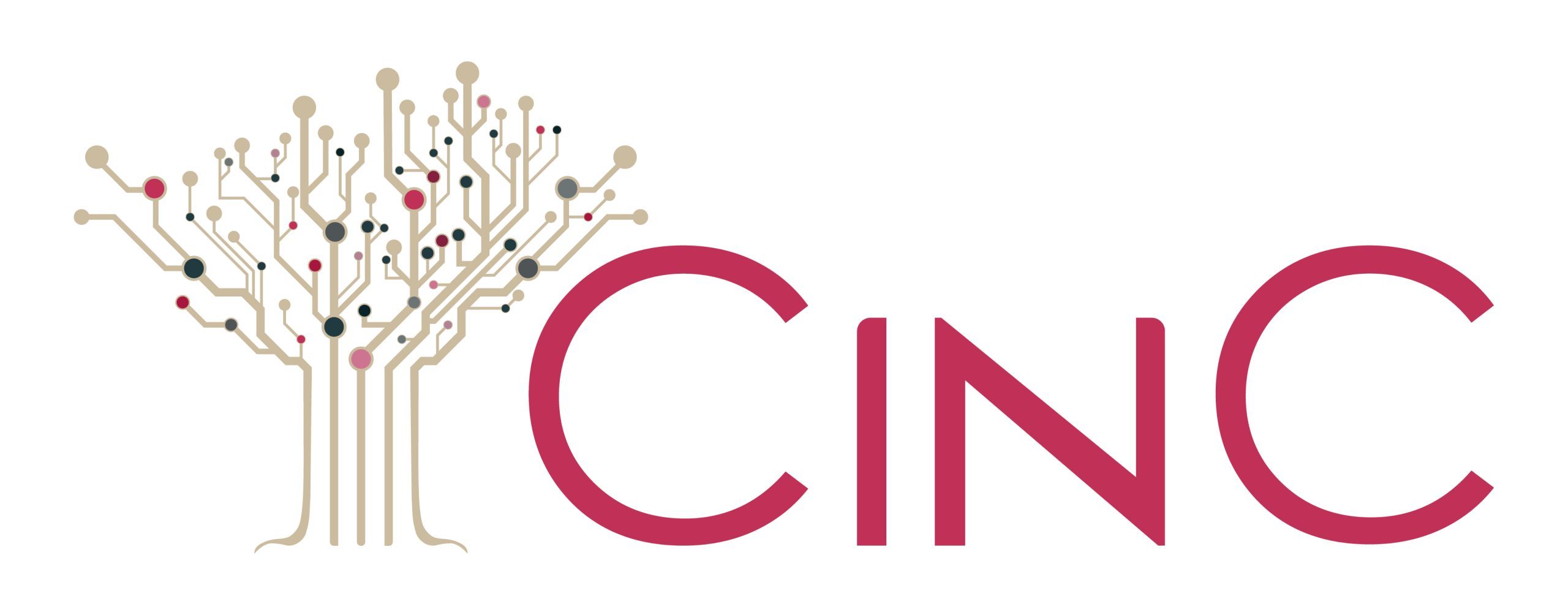


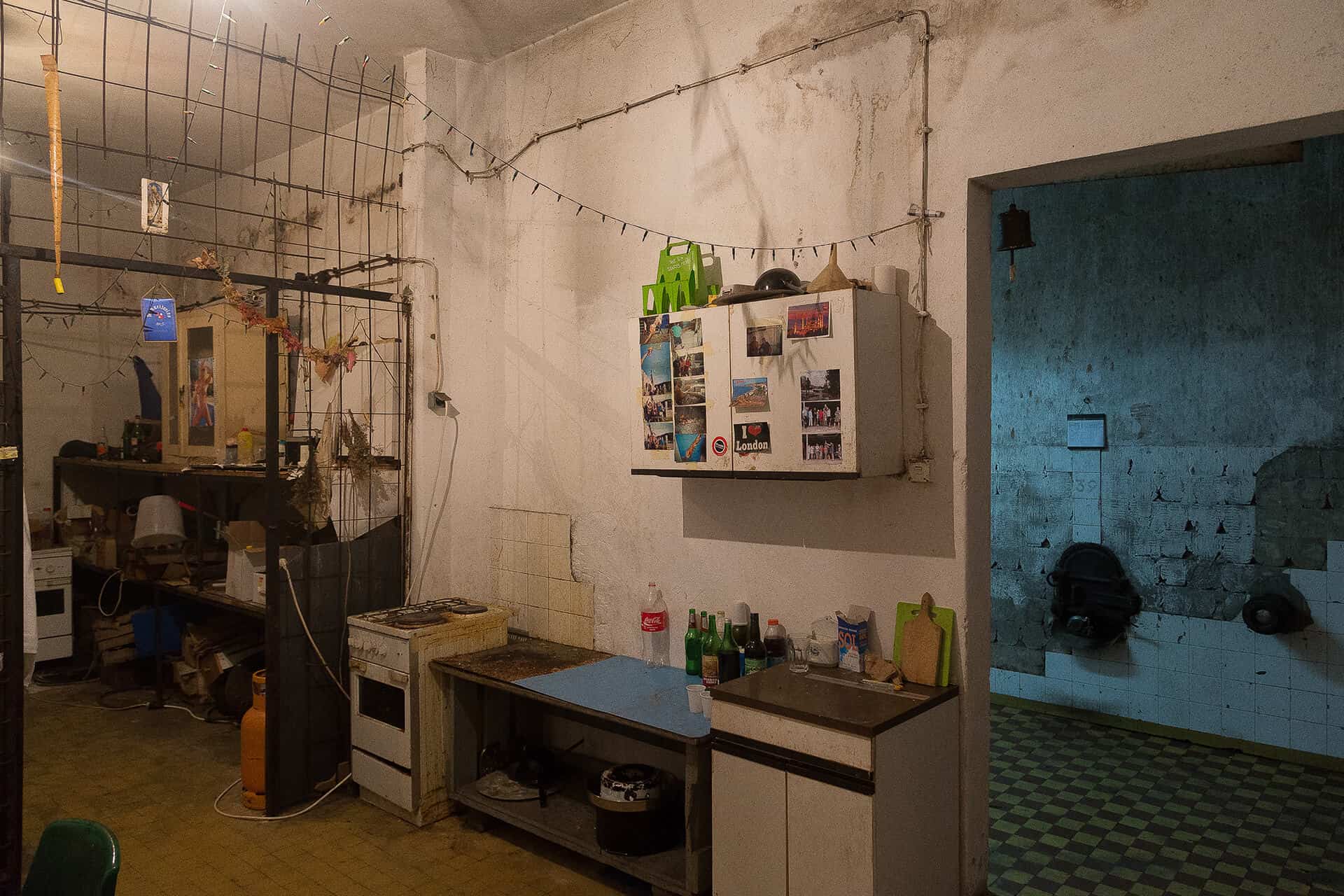
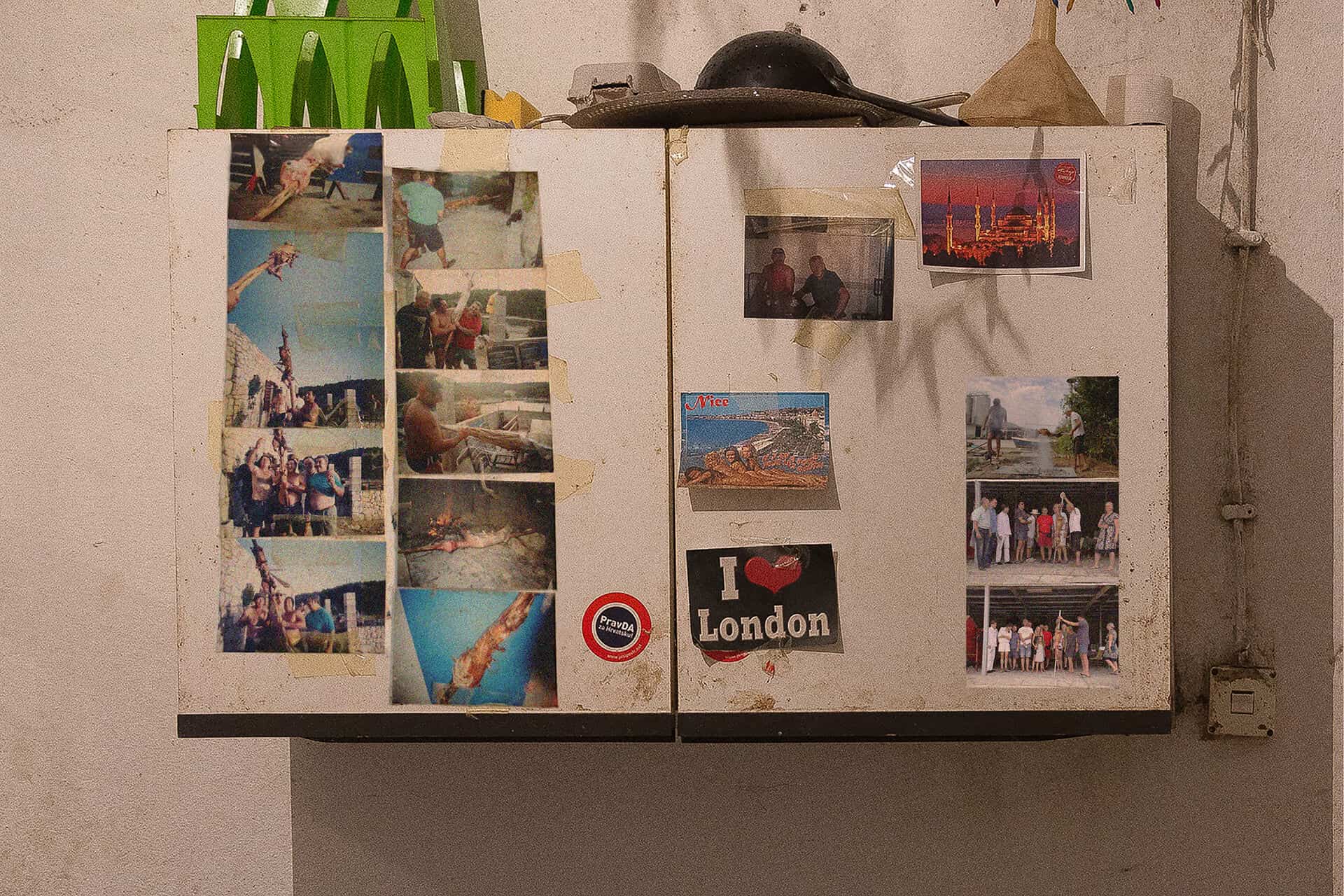
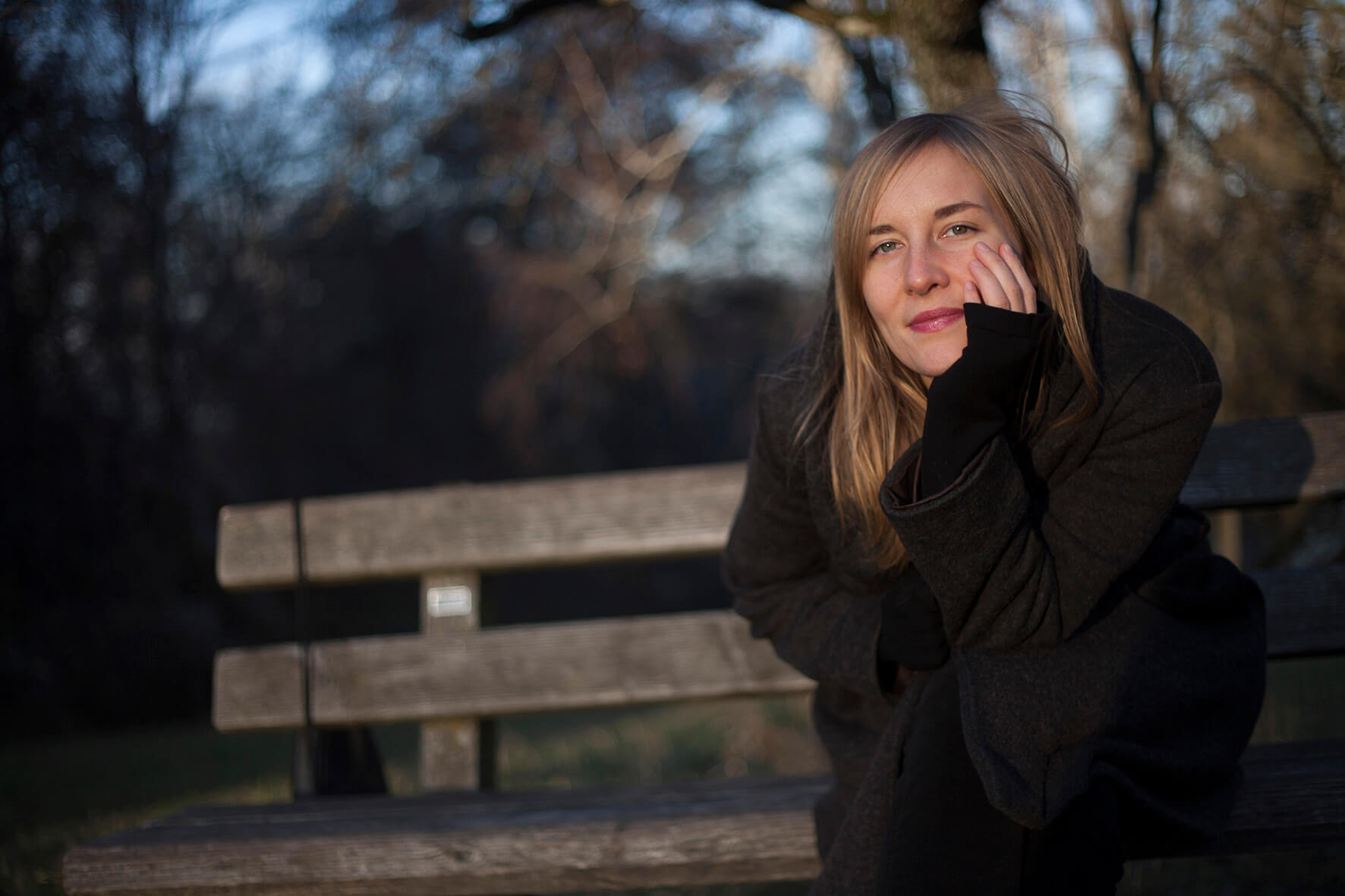

Añadir un comentario